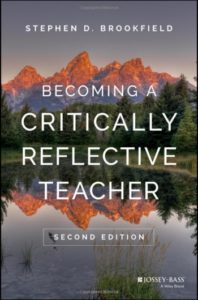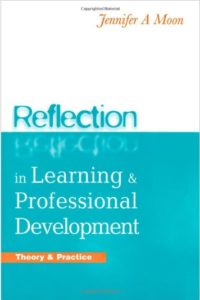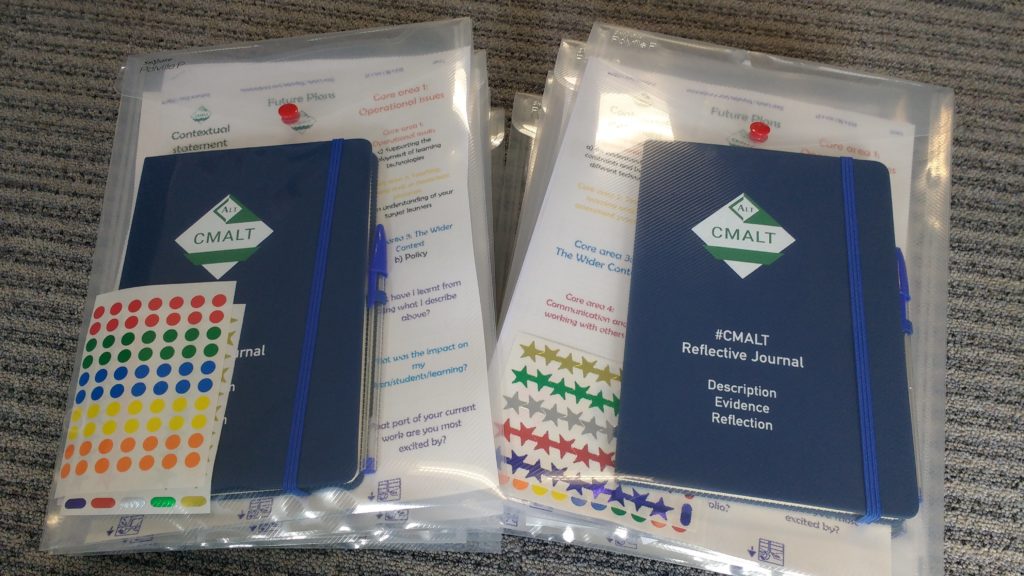I’m interested in the idea of metaphor to aid understanding. A few years ago a colleague recommended that I read ‘Metaphors we live by’ by Lakoff, G and Johnson, M (2003), which opened my eyes to the power of metaphor and the way it can thread unquestioned through our language and underpins and influences our conceptual understandings.
When selecting images to represent reflection in Continued Professional Development (CPD) show beautiful landscapes reflected in clear pools of water, sharp outlines duplicated in each half of the picture. And I’m not alone – see the examples below :


I’m guilty of collecting these images myself, believing that they were a useful visual aid to the concept of reflection – I guess I’m still deeply influenced by my own initial discipline training which was in Fine Art. They are beautiful and contemplative but as a metaphor for reflection – misleading. They better represent description, the accurate representation of things as they currently are. I wonder if this is part of the conceptual problem that participant in my CMALT cohort have with the idea of reflection?

“Lack of reflection” is the number one reason that CMALT portfolios are returned for further work. I can see from my participants that its not lack of effort so much as lack of understanding that causes this.
In a determined effort to meet the criteria I have seen participants add headings throughout their portfolios to remind them: Description, Evidence, Reflection. My observation is that this is not a successful – what tends to happen is they provide more detailed description under the heading of reflection. The problem is not effort – it is a fundamental misunderstanding of what reflective writing is and of what the assessors are expecting to see here. As someone supporting applicants I see it as my job to better explain this concept and direct them to sources that will help them to understand the concept. The use of this common sense image of reflection may be causing confusion rather than helping.
What I understand to be reflection in the context of the CMALT portfolio is:
The assessors want to see that you think about your work and that your practice develops over time. That you understand your subject and can make connections between the theory and your (and others) practice. The assessors want to know about your values, what drives you and is important to you. If, as an assessor, I don’t get a sense of ‘who’ the person is when I read the portfolio, I don’t think there is enough reflection – you need to put some of yourself in there.
A picture of a person gazing into a mirror maybe more helpful- because its the consideration of self that is more important than showing an accurate facsimile.
I discussed this with my mentor and he suggested “refraction” as a better metaphor, the way things change as they move through different surfaces, which led us to the ‘lens’ metaphor which I discuss in a subsequent post.
In order to address my cohorts understanding of reflection. I have invited an expert speaker to come and talk to the cohort to explain what this is and what is expected.
I’ve also put together a reflection pack with a journal and stickers. The aim of this is to encourage participants to reflect over a period of time, so that it becomes part of their daily practice. The stickers include a list of the portfolio areas and reflection questions to act as prompts. Participants report finding these helpful.

References:
Brookfield, S. (2017) Becoming a Critically Reflective Teacher. 2nd Ed Jossey-Bass (Kindle Edition)
Lakoff, G. and Johnson, M. (2003) Metaphors We Live By. The University of Chicago Press, Chicago.
Moon, J. (2000) Reflection in Learning and Professional Development: Theory and Practice. RoutledgeFalmer. Oxon.